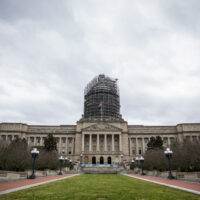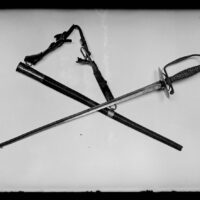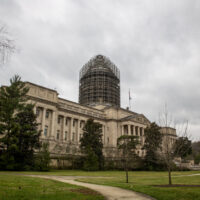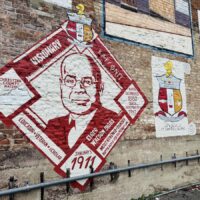As if I wasn’t already running on too much caffeine and not enough sleep these days, Sunday marks the beginning of Daylight Saving Time (DST), where we turn our clocks one hour forward (and lose one hour of sleep).
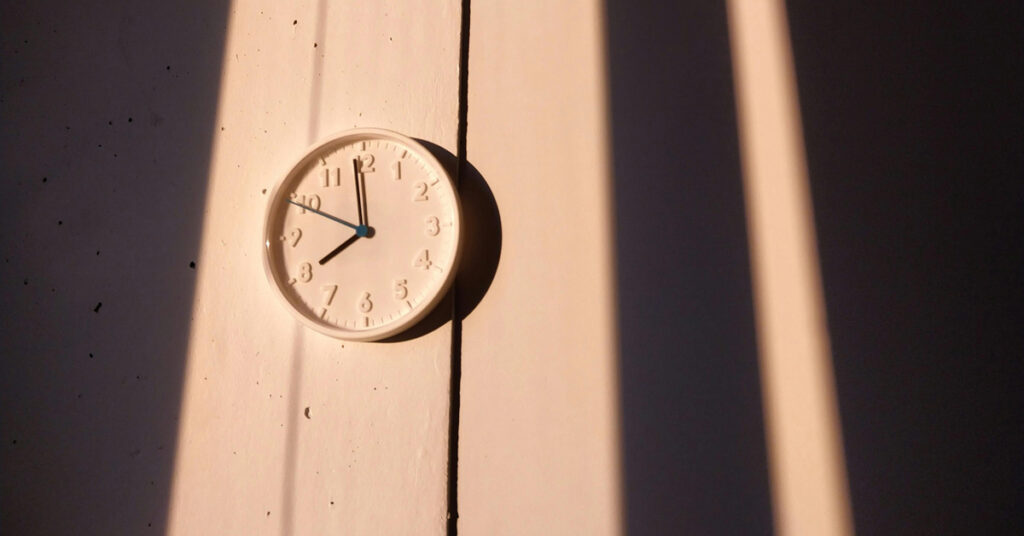
I’m told that while the short-term adjustment is exhausting, the long-term reward of extra sunlight in the evening should be celebrated. Please join me in the ceremonial act of reaching for the snooze button on your morning alarms next Monday!
My name is Lane Fischer by the way, and welcome to a special guest edition of Keep It Rural. This week, Claire Carlson has handed me the wheel, and I’m digging into daylight saving’s controversial past.
We often think about time as a given, but for much of human history people led an agrarian lifestyle, and time was something more abstract. Rather than hours and seconds, the meaningful divisions of life were marked by day and night, birth and death, planting and harvest, work and play.
While today’s system is more “precise,” it’s fascinating to dwell on what life might’ve been like if we still lived by the sun, and mechanical time-keeping never became the standard.
Conserving what, exactly?
By the turn of the 20th century there were more people than ever living on the planet and, notably, more people than ever living in urban areas.
Daylight saving time, initially known as “War Time” was first introduced in the United States through the Standard Time Act of 1918. The act also gave the government the authority to standardize time across the country.
The U.S. followed the lead of European countries who were reporting that adding an extra hour of sunlight conserved fuel during the first world war.
Though fuel conservation was the official reason provided by the government, the United States Chamber of Commerce was the largest proponent of DST, said Michael Downing, author of Spring Forward: The Annual Madness of Daylight Saving Time.
Adding an extra hour of light to the evening meant Americans would be more likely to go shopping at stores after work and more likely to play another round of golf, he said.
But not everyone was jumping on the DST bandwagon. Farmers, contrary to popular belief that DST helps prolong their workday, despised time change. Even today, farmers, and the plants and animals they tend to, still live by the sun.
“People think it was put in place for farmers, but the leading group against daylight saving time has always been farmers and agricultural people,” said David Prerau, author of Seize the Daylight: The Curious and Contentious Story of Daylight Saving Time.
Daylight saving may have worked for folks in cities who checked their watches to stay on task. But for farmers, it meant less time in the morning to milk their cows before the delivery truck showed up (the cows weren’t ready to be milked because they don’t follow time change) and less time for the dew to dry before needing to harvest their crops (evaporation also doesn’t follow time change).
The farm lobby was powerful, too. Farmers actually forced Congress to repeal DST even before the Treaty of Versailles was signed to officially mark the end of World War I.
But that wasn’t the end of the battle. Capitalists in cities favored the economic boosts that DST provided and they didn’t want to give it up.
A national DST was re-introduced during World War II and many cities continued to observe a metropolitan daylight saving after the war and national DST ended, citing financial benefits. The result, Downing said, is “cities observing daylight saving time surrounded by rural areas that are not, and no one can tell what time it is anywhere.”
This patchwork of time prompted the United States government to enact the first peacetime DST in the Uniform Time Act of 1966, which set six months of DST. Congress would later add an additional month in 1986 and, in 2007, expanded DST to the eight month schedule we are now familiar with. DST is uniformly recognized across the country today, with exceptions in Hawai’i, U.S. territories, and in non-Navajo Nation parts of Arizona.
In March 2022, the U.S. Senate unanimously voted to pass the Sunshine Protection Act, which would create a year-round daylight saving observance. The bill never passed in the House and never became law. 27 states have also proposed similar measures, none of which have yet become law.
Time is money
Why does daylight saving time appear to be an inescapable destiny? Let’s follow the money.
The typical reason for implementing DST is energy conservation. At best, DST results in a daily 0.5% decrease in total electricity use, according to a 2008 report from the Department of Energy.
But other reports are more skeptical. A 2011 study found that in some Indiana counties, DST increased energy consumption by as much as 4%.
Another suggested that DST actually increases motor fuel consumption, because folks are likely to increase car travel during the extra evening light.
Some say DST is good for our health, allowing us to get outside and soak up the extra rays of daytime sun. But others say the benefits do not outweigh the many health concerns caused by DST adjustment, including spikes in workplace and vehicular accidents, suicide, headaches, and heart problems caused by sleep deprivation.
A 2009 study found a 5.7% increase in injuries at a mine during the week after the start of DST. And another study found that sleep deprived judges exact more severe penalties during the DST adjustment period.
While the energy and health arguments for DST are shoddy, the economic benefits for certain industries are apparent.
In 1986, after the first added month to DST, the golf and BBQ industries claimed the extra month would be worth between $200 million and $400 million. In 2010, The Association for Convenience and Fuel Retailing, a lobbying group for gas stations and convenience stores, said that the industry had added an estimated $1 billion in annual sales since pushing to add that extra month in 1986.
It appears, perhaps unsurprisingly, that urban tycoons, the retail outlets and recreational businesses of the world, have been the beneficiaries of daylight saving. They’re the ones who crafted and lobbied for the standard and universal time system we use today, and who wish to expand DST year-round.
The power to control time
One of the founding leaders of the United States, Thomas Jefferson, had a preoccupation with clocks and keeping time, which is preserved by archaeologists who’ve studied his Poplar Forest plantation.
After time became formalized in European thought, “redeeming time, or using it properly became an overriding concern,” writes Karen E. McIlvoy for the Poplar Forest Archaeology Blog.
Jefferson, a slaveholder and plantation owner, measured the cost of tasks by how much time they took to complete. He strived to maximize work in minimal time, to save money and increase profits.
Despite the fact that African society was governed by the sun and not a clock, Jefferson believed that “slaves needed to be regulated by someone with an appreciation for the value of time,” writes McIlvoy.
He requested that a Chinese gong be installed in his Great Clock at Monticello, to “serve as a bell … which might be heard all over my farm.”
This culture of imposing obedience to time on laborers persisted.
During industrialization, millions of Americans left farms for factories. Most rural migrants never owned clocks and many did not know how to tell time — they never needed to.
“In the 1800s, upper-class people in America made an obsessive point of scheduling,” said Carlene Stephens, a curator of the “On Time” exhibition at the Smithsonian. “But the idea was completely new for common folks on the farm.”
“Also new,” she said, “was the idea of working for someone else on someone else’s schedule, for a wage.”
Horns, bells, and whistles marked the beginning and end of work shifts in mines and factories. Today, those bells have turned into alarms, reminding us of our obligations to some higher power. Unless you work for yourself, much of your week is probably controlled by “company time.”
Society’s elite have always set the schedules for their subordinates, but it wasn’t until the standardization of time and DST that these elites seized enough influence to set the schedules of entire nations.
“I was born on a reservation in South Dakota,” writes Anne Elizabeth Moore, author of “On Leaving the Birthplace of Standard Time.”
Moore recalls a concept called Indian time, “the awareness that time — standard time in particular — is a construct of capitalism, and the doings of animals like people are not beholden to patterns of efficiency or imperialism.”
There’s an escapist sentiment among many people entangled in standardized time and DST that remains today.
Rural and remote places across the world are bastions of those “old world” conceptions of time, places where we can go to slow down and leave the stresses of work and busy social calendars behind. But only for a weekend, to cleanse our palettes before heading back into the familiar, albeit, exhausting, comforts of the “real world.”
So who built this “real word” and for whom was it built? Time, as we conceptualize it today, was not created for rural interests, or even human interests. Time is part of what moves the machine of extractive capitalism, and it was instated by those who would benefit most from a standard system.
Changing how we live in the world, and how we conceptualize something as universal as time is difficult. But some aspects of time are not set in stone. Take daylight saving, for example.
DST has only been the standard in the U.S. for a little over 50 years. And around the world today, only about one-quarter of the population observes daylight saving, something that, at least to me, has no clear upside for regular folks.
Maybe we should ask ourselves whose time we’re living on.
This article first appeared on The Daily Yonder and is republished here under a Creative Commons license.
